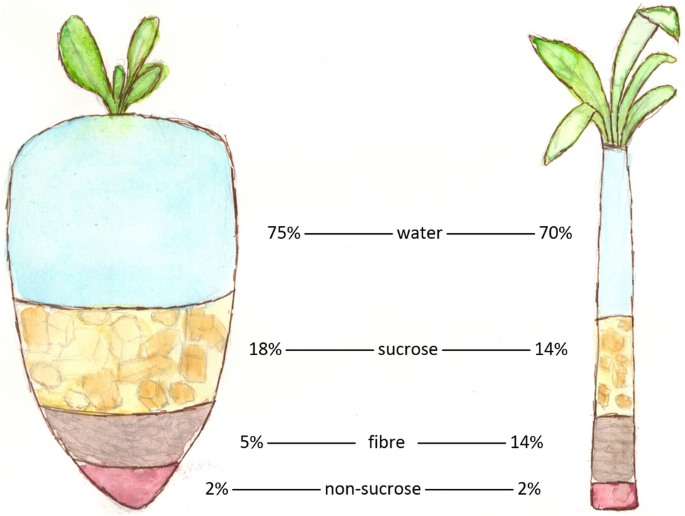Many people compare beet sugar vs cane sugar to understand their distinctions in taste and consistency.
Discovering the Distinctions being used and Benefits In Between Beet Sugar Vs Cane Sugar
In the cooking globe, the option in between beet sugar and cane sugar is not simply about sweetness yet includes a nuanced consideration of taste, application, and impact. While both sugars come from various plants, each goes through unique production procedures that discreetly influence their characteristics and viability for various meals. As cooks and consumers progressively focus on both the environmental and flavor profiles of their components, recognizing these differences ends up being vital. This exploration supplies insight right into just how each sugar type can best boost cooking developments.
Beginnings and Manufacturing Procedures of Beet and Cane Sugar

Walking stick sugar, on the various other hand, comes from the sugarcane plant, an exotic grass native to Southeast Asia but currently cultivated in exotic zones worldwide - beet sugar vs cane sugar. The manufacturing of cane sugar begins with the harvesting of cane stalks, which are crushed to launch the juice.

Nutritional Content and Health Considerations

When contrasting the nutritional material of beet sugar and cane sugar, it becomes apparent that both kinds basically offer the exact same calorie values, with about 16 calories per tsp and no substantial nutrient diversity. Both sugars, when eaten in excess, can contribute to elevated blood glucose degrees, a risk element for diabetic issues and various other metabolic disorders. From a health and wellness point of view, regulating intake of any type of sugar, whether from beet or cane, is a good idea to stay clear of these potential negative impacts on wellness.
Taste Accounts and Culinary Applications
Regardless of their similar chemical structures, beet sugar and cane sugar differ subtly in flavor, which can influence their use in various culinary contexts. Walking stick sugar usually carries a hint of molasses, even in its refined form, lending a warm, caramel-like undertone that enhances baked goods, coffee, and chocolate-based dishes. This mild molasses taste is specifically valued in the cooking sector for including deepness to desserts and breads. On the various other hand, beet sugar is identified by its very fine-tuned, neutral preference, making it a flexible sweetener that does not More Bonuses alter the taste accounts of meals. This neutrality is particularly useful in delicate dishes, such as light pastries, lotions, and some sauces, where the integral flavors of various other active ingredients are intended to stand apart. Chefs and food producers might select one type of sugar over the various other based on the preferred flavor end result of their cooking creations.
Ecological Effect and Sustainability
While both beet and cane sugars are originated from plants, their ecological impacts differ significantly because of the distinctive methods of growing and handling required for every. have a peek at this site Sugar beet farming usually involves considerable mechanization, which can boost nonrenewable fuel source consumption and carbon discharges. Beetroots can be expanded in cooler environments and require less irrigation, potentially reducing water usage compared to sugarcane. Sugarcane, on the other hand, is commonly grown in tropical regions where it relies heavily on irrigation and a much longer growing period, enhancing its water impact.
Furthermore, the processing of sugarcane frequently generates a substantial quantity of waste, including bagasse, which, although functional as biofuel, frequently contributes to air contamination if melted inefficiently. Sugar beet handling uses more of the raw products, causing less waste. Both sectors encounter difficulties in minimizing their environmental impacts, yet continuous developments in agricultural techniques and waste administration are intending to enhance sustainability.
Economic Aspects Influencing the Sugar Sector
The economic dynamics of the sugar market are substantially affected by international market needs and trade policies. In areas where sugarcane or sugar beet manufacturing is subsidized, manufacturers might have an economic benefit that allows them to offer lower prices on the global market.
Additionally, changes in worldwide need for sugar, influenced by dietary trends and industrial usage in food, straight influence rates and manufacturing degrees. beet sugar vs cane sugar. Weather additionally play a critical function, as they can substantially impact crop yields and, consequently, the supply chain. This variability presents a this contact form degree of financial uncertainty that can bring about financial investment volatility in sugar manufacturing markets, affecting decisions from planting to market strategy
Verdict
In final thought, both beet and cane sugar have unique top qualities that fit various culinary demands. While cane sugar imparts an abundant flavor suitable for enhancing baked products, beet sugar's neutrality is best for lighter dishes.